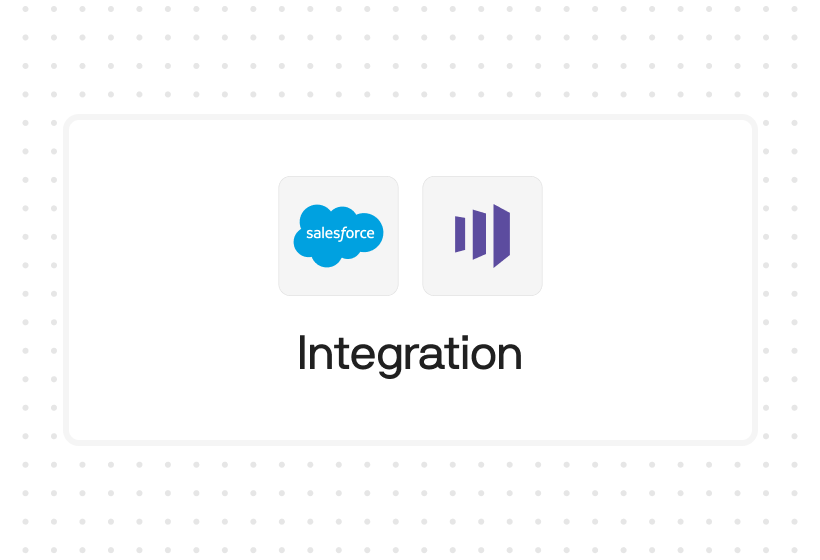Try Default

See how revenue teams automate revenue operations with Default.

Key Takeaways
B2B sales cycle lengths range from weeks to months on end, subject to all kinds of variables. Regardless of where your business falls on that spectrum, we can all agree that reducing sales cycle length is a top GTM priority:
- Longer sales cycles increase likelihood of slowdown, bottlenecks, and loss of enthusiasm
- Sales cycles that extend past two months have a significantly lower change of closing
- The longer the sales cycle, the more active management it requires from the rep, increasing acquisition costs
There are a range of strategies, tools, and methods available to reduce sales cycle length. But one that often gets overlooked: lead qualification.
In this article, we’ll walk through exactly how proper lead qualification—both by marketing and sales—can shorten your B2B sales cycle length.
Which factors drive sales cycle length?
Before we dive into the factors that impact sales cycle length, let’s zoom out and ask a more basic question: what is the average B2B sales cycle length?
The basic answer is: 2.1 months (Databox). However, that doesn’t necessarily mean that your B2B company can or should experience a similar sales cycle. For example, enterprise sales cycle lengths are much longer, lasting six months to more than a year in some cases.
As we’ll see below, there are many factors that can make your sales cycle longer or shorter. Many of these have nothing to do with marketing or sales effectiveness, but merely the nature of your business, industry, or customer base.
Check out the following data from Databox showing the average sales cycle length for a B2B company:

The graphic below from Zippia shows similar results, but breaks it down by new and existing customers:

So whether you’re looking at closing new leads or renewing existing business, you’re looking at sales cycles that could go on for months on end.
Why are B2B sales cycles so long? And why, based on data from Ebsta, did sales cycle lengths increase by 32% last year? It comes down to a number of factors:
- Limited budgets and resource reprioritization. Whether it’s Covid, global disruption, or the impending rolling recession, the last few years have been highly volatile, and companies are resource-strapped. This means that buyers are highly critical of the value of any new addition to their vendor list, and will take more time to evaluate potential vendors.
- Sales team reductions. On the other side of the board, 2023 has seen unprecedented numbers of layoffs, many of whom are marketers and salespeople. Reduced capacity means prospect management simply takes longer.
- More complex stakeholder networks. Last year, the average number of stakeholders in a B2B deal increased to 10. More stakeholders require more introductions, scheduling difficulties, and greater time for deliberation and decision.
- Product complexity. Particularly among the technology sector, products are becoming more complex, requiring deeper customer education to achieve buy-in and drive a sales decision.
So what are these figures telling us? Looking at the broad commonalities of each, we can surmise a few things:
- In b2b saas sales, talking to the right person within a company is just as important as talking with the right company
- Marketing and sales functions must harmonize their efforts to maximize internal resource application
- Salespeople must understand buyer intent and tailor their selling strategies to align with that intent—otherwise they’re going to waste the buyer’s time (and theirs)
Now, let’s discuss some tips for putting these general principles into practice.
How do you use lead qualification to reduce sales cycle length?
So now let’s get into lead qualification, and how it specifically helps to address the issues above:
- Ensures you’re talking with the contact and company within your ICP
- Clarifying and specifying buyer intent
- Enables seamless handoff from marketing to sales
Lead qualification enables success in these areas in multiple ways. Here are some of the most impactful.
1. Prioritize your sales efforts by both account and contact
B2B lead qualification occurs in two dimensions: company and contact. Both are equally important.
If you have the right company but not the right contact, you’ll end up spending a lot of time with someone that doesn’t have buying power. Vice versa, your buyer likely won’t get enough value out of the product, and will not close at all.
By helping you to prioritize where your team puts their efforts, lead qualification can help you:
- Avoid wasting time on leads that can’t and won’t buy, allowing you to spend more time pushing qualified leads through the pipeline
- Quickly give you detailed information about the prospect so you can identify blind spots and fill them quickly
- Provide enough information to drive automated workflows post-conversion
Our guide on enterprise SaaS sales could also be a helpful resource.
2. Identifying alternative workflows for unqualified leads
Lead qualification’s first objective is to identify good-fit leads for your business. However, not every lead is going to be a good customer—but that doesn’t mean you can’t get value out of those relationships.
In fact, there are multiple ways to leverage non-qualified leads to accelerate your B2B sales pipeline:
- Identify potential customers that could get value from your product but don’t align with your current ICPs
- Place non-active buyers into a workflow or nurture stream to consistently engage and follow up on leads until they become ready to convert
- Gain market insights from industry experts who may not be a potential product user
3. Tighten your pipeline ratios
Pipeline-to-quota ratio—the percentage of potential revenue in the pipeline vs. a rep or team’s quota—is a key metric in pipeline management. The higher the ratio, the greater the likelihood of making quota.
Although there are highly sophisticated revenue intelligence technologies to help calculate potential revenue, most of them are only accessible to highly resourced enterprises. For most companies, lead demographics are the best indicator of a given account’s potential revenue.
So the more you can learn about your leads, the better you can forecast potential revenue. Lead qualification, then, helps ensure your pipeline ratios more closely align with reality.
While greater pipeline ratios don’t themselves shorten sales cycle length, they are another way lead qualification can help you manage sales slowdown if and when it occurs.
4. Continually adjust and improve
No matter how much automation you use in your lead qualification processes, it’s never a done deal. There is a continual need to adjust, improve, and reexamine your GTM strategies, tactics, and systems.
- If you’re continually attracting unqualified leads, you need to adjust your marketing messaging (or rethink your ICPs)
- If you’re unable to close highly qualified leads, you need to rethink whether those leads are actually qualified, and what “qualified” even looks like
- If you find yourself unable to handle the number of leads you’re getting, you may need to adjust your automations to align with your sales process or GTM motion
Final thoughts on using lead qualification to reduce sales cycle length
As we’ve seen so far, lead qualification can significantly reduce sales cycle length. However, it’s only one tool in the toolkit—and you need an integrated inbound GTM engine to take advantage of it:
- Inbound lead flows that capture relevant information and enrich with third-party data
- Automated scheduling and routing workflows to close the gap between conversion and meetings
- Routine follow-up to ensure qualified leads don’t languish in the pipeline
Rather than string together a bunch of point solutions, you can function more efficiently and with significantly less business risk by adopting an all-in-one inbound GTM engine.
See how Default helps leverage lead qualification to reduce sales cycle length. Contact our team to get a demo.
Conclusion

Building Default to help the next 10 million B2B companies grow from zero to IPO better, faster, and cheaper.
Run revenue as an engineered system
Revamp inbound with easier routing, actionable intent, and faster scheduling














.png)

























